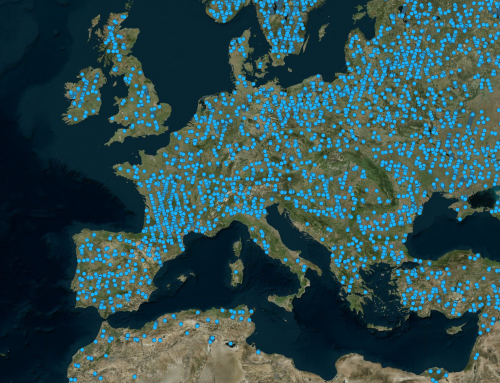Evaluation of future satellite missions for GHG surface emission retrievals
NOVELTIS has developed, in collaboration with the LSCE, a unique System Simulator of the theoretical performances of MicroCarb and MERLIN satellite missions for atmospheric GHG monitoring in terms of expected accuracy on surface fluxes at large spatial scales (500 to 1000 km).
Atmospheric carbon dioxide (CO2) and methane (CH4) are two of the most important greenhouse gases. For an increased understanding of the relationships between the carbon cycle, including anthropogenic emission, and climate change, it is crucial to be able to accurately quantify fluxes of CO2 and CH4 between the atmosphere and the Earth’s surfaces at large scales. The network of ground stations and airborne flask measurements monitor accurately and without bias the temporal evolution of these greenhouse gases (GHG) but suffer from a limited spatial coverage.
Space-borne sensors provide a more complete spatio-temporal coverage, but however at the expense of a lower measurement accuracy and the existence of systematic errors. In order to infer corresponding GHG emissions and sinks at the Earth surface, these space-borne requires assimilation system relying on chemistry transport models.
The future MicroCarb (CNES) and MERLIN (DLR-CNES) missions, scheduled for launch in 2021 and 2024, will monitor atmospheric weighted columns of carbon dioxide (XCO2) and methane (XCH4) respectively at the global scale.
Project details
Categories:
Tags:
Share this project:
Evaluation of future satellite missions for GHG surface emission retrievals
NOVELTIS has developed a unique System Simulator of the theoretical performances of MicroCarb and MERLIN satellite missions for atmospheric GHG monitoring in terms of expected accuracy on surface fluxes at large spatial scales (500 to 1000 km).
Project details
Categories:
Atmospheric carbon dioxide (CO2) and methane (CH4) are two of the most important greenhouse gases. For an increased understanding of the relationships between the carbon cycle, including anthropogenic emission, and climate change, it is crucial to be able to accurately quantify fluxes of CO2 and CH4 between the atmosphere and the Earth’s surfaces at large scales. The network of ground stations and airborne flask measurements monitor accurately and without bias the temporal evolution of these greenhouse gases (GHG) but suffer from a limited spatial coverage.
Space-borne sensors provide a more complete spatio-temporal coverage, but however at the expense of a lower measurement accuracy and the existence of systematic errors. In order to infer corresponding GHG emissions and sinks at the Earth surface, these space-borne requires assimilation system relying on chemistry transport models.
The future MicroCarb (CNES) and MERLIN (DLR-CNES) missions, scheduled for launch in 2021 and 2024, will monitor atmospheric weighted columns of carbon dioxide (XCO2) and methane (XCH4) respectively at the global scale.

During the development phase of the missions, it is important to already assess their expected performances to reduce uncertainties on carbon dioxide / methane emissions depending on several possible scenarios of instrument characteristics and on plausible causes of random and systematic errors.
Because uncorrelated random errors statistically diminish with the time accumulation of raw satellite data, it is expected that they provide a too optimistic view of the performances of the tested observing networks to constrain surface emissions. On the contrary, systematic errors remain when accumulating data, and may ultimately limit the exploitation of satellite data to constrain surface emissions. Using OSSE provides an efficient tool to estimate the reduction of uncertainties on carbon dioxide / methane emissions that can be expected once the satellite are launched.
Means used
Results
Client / Partner(s)






